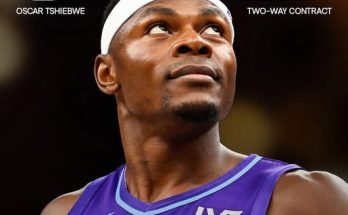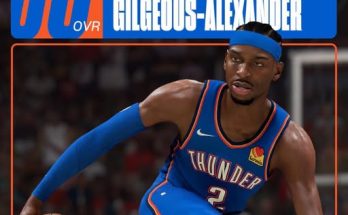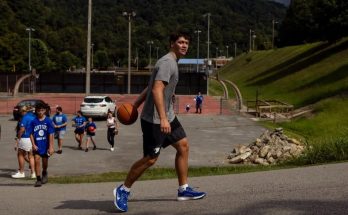Shohei Ohtani, the Los Angeles Dodgers’ superstar and one of the most electrifying talents in baseball history, is on the road to reclaiming his status as a dominant two-way player. The anticipation surrounding his return to the mound has captivated fans, analysts, and even rival teams as the Dodgers craft a meticulous plan to reintegrate him into the pitching rotation. After undergoing his second major elbow surgery in September 2023, Ohtani has focused solely on hitting during the 2024 season. Now, with 2025 in full swing, Dodgers manager Dave Roberts and the organization are carefully orchestrating his long-awaited return to pitching.
A Calculated Approach to Recovery
Ohtani’s journey back to the mound has been defined by patience and precision. Unlike his first Tommy John surgery in 2018, after which he rushed back to the mound in 2020 with mixed results, this time around, the Dodgers have emphasized a methodical rehabilitation plan.
The primary concern is ensuring Ohtani’s long-term durability as a two-way player. Given his unprecedented workload—both pitching and hitting at an elite level—the Dodgers have consulted medical experts, trainers, and Ohtani himself to structure a comprehensive recovery process.
Key Phases of Ohtani’s Recovery:
- Initial Rest and Rehabilitation (September – December 2023):
- After surgery, Ohtani was sidelined from all throwing activities. Instead, he focused on mobility, flexibility, and gradually strengthening his elbow without putting stress on the ligament.
- His hitting routine resumed earlier, allowing him to maintain his offensive skills while his pitching arm recovered.
- Light Throwing and Strengthening (January – February 2024):
- Ohtani began light throwing sessions in controlled environments, focusing on building arm strength without exceeding limitations.
- His early bullpen sessions were closely monitored, ensuring he did not overexert his surgically repaired elbow.
- Increased Intensity and Bullpen Work (March – June 2024):
- By spring, Ohtani started ramping up his throwing program, increasing both velocity and pitch variety.
- Simulated games were introduced, allowing him to face live hitters in a controlled setting.
- Minor League Rehab Assignments (July – August 2024):
- The Dodgers considered a short stint in the minors to allow Ohtani to gain game-speed experience before returning to MLB action.
- Gradual MLB Integration (September 2024 – Early 2025):
- If all went according to plan, Ohtani would pitch in controlled settings at the major league level, potentially in low-stress relief appearances before returning to full-time starting duties in 2025.
Dodgers’ Strategic Rotation Plans
One of the key elements in ensuring Ohtani’s long-term success is a carefully managed workload. Unlike traditional starting pitchers, who typically throw every five days, the Dodgers are implementing a six-man rotation to provide extra rest between Ohtani’s starts.
This strategy serves multiple purposes:
- Extended Recovery Time: The additional rest days allow Ohtani to maintain peak performance without risking reinjury.
- Maximizing Offensive Contributions: Since Ohtani also serves as the team’s designated hitter, a flexible rotation schedule ensures he remains effective at the plate while managing fatigue.
- Aligning with Other Pitchers: The Dodgers’ rotation, featuring stars like Walker Buehler and Yoshinobu Yamamoto, will benefit from a deeper pool of starters, helping manage the staff’s workload over a 162-game season.
Adjusting His Pitching Style
While Ohtani’s return to pitching is exciting, it comes with a few changes. The Dodgers’ coaching staff, in collaboration with Ohtani, have identified specific adjustments to minimize stress on his elbow and enhance longevity:
- Modified Pitch Selection:
- Ohtani’s pre-injury arsenal included a devastating splitter, a fastball reaching 100 mph, and an array of breaking balls. However, given the strain certain pitches put on his elbow, he may limit his use of the splitter, favoring his slider and curveball more.
- Controlled Velocity:
- Rather than consistently throwing in the upper 90s, Ohtani is expected to sit in the mid-90s, prioritizing location and movement over sheer speed.
- Lower Pitch Counts:
- The Dodgers will closely monitor his pitch counts, likely capping his outings at 80–90 pitches early on before gradually increasing as the season progresses.
Hitting While Managing Workload
Ohtani’s return to pitching doesn’t mean his offensive prowess takes a back seat. In fact, the Dodgers see him as an integral piece of their lineup, regardless of his role on the mound. However, adjustments will be made to keep him fresh throughout the season:
- Fewer Stolen Bases: While Ohtani’s speed has been an asset, he may cut down on aggressive base running to avoid unnecessary injury risks.
- Rest Days as DH: The Dodgers may occasionally rest him on days before or after his starts to ensure proper recovery.
- Load Management Throughout the Season: The coaching staff will monitor his fatigue levels, potentially giving him strategic off-days when needed.
Projected Impact on the Dodgers’ 2025 Season
The return of a fully operational two-way Ohtani could be a game-changer for the Dodgers. His unique skill set allows the team to maximize roster flexibility while gaining an elite-level hitter and pitcher in one player. If Ohtani returns to his peak form, he has the potential to be an MVP candidate while bolstering the Dodgers’ rotation in their pursuit of a World Series title.
Additionally, his presence in the lineup, alongside Mookie Betts and Freddie Freeman, creates a nightmare scenario for opposing pitchers. His ability to impact games both at the plate and on the mound gives the Dodgers an unprecedented advantage.
The Road Ahead
While the excitement surrounding Ohtani’s return to pitching is immense, the Dodgers remain cautious. They understand that setbacks are possible, and any signs of discomfort will lead to an immediate reevaluation of his workload.
The 2025 season is a pivotal year for Ohtani’s legacy. If he successfully transitions back into a two-way role while maintaining his health, he will further solidify his status as one of baseball’s all-time greats.



